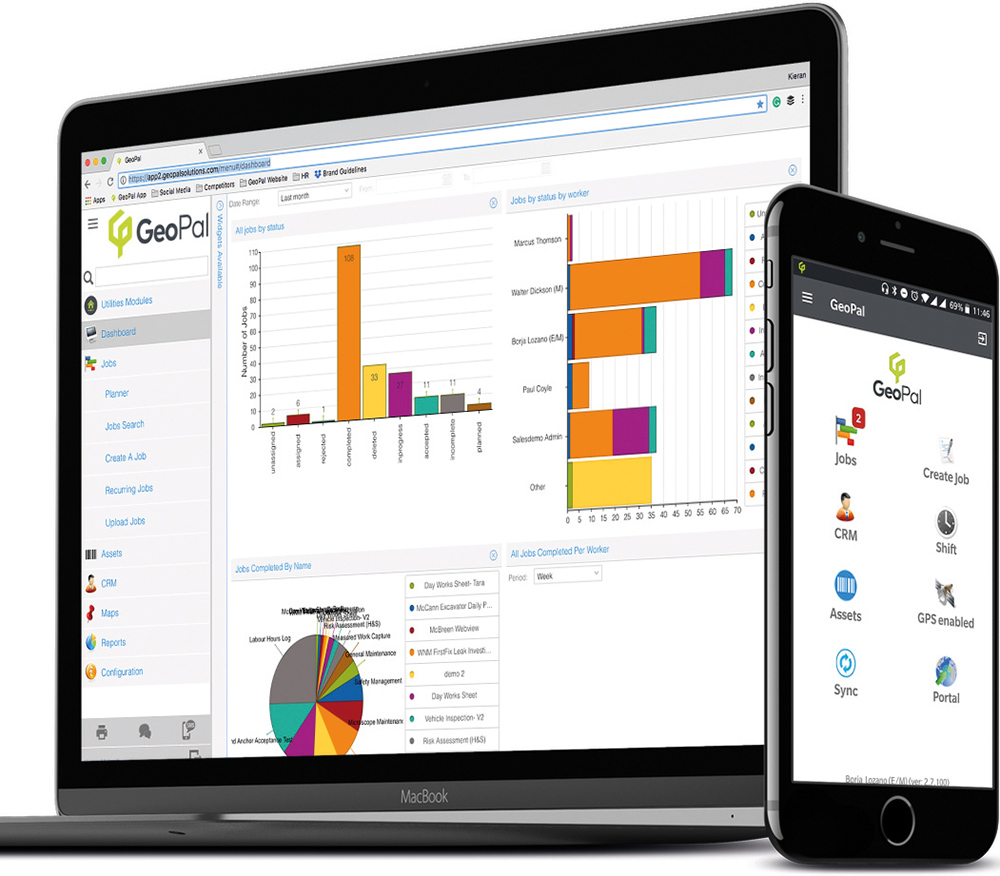By Gerard O’Keeffe (CEO, Geopal Solutions)
In 2014, as many of you will be aware, OFWAT introduced PR19 – an outcome based methodology for setting water prices across the UK with AMP6 covering the period up to year end 2019. OFWAT have recently released details of the next stage, AMP7 which will refine the methodology through the next 5 year period beginning in 2020. The regulator aims to ensure that utility organisations are focused on delivering important improvements to customers.
Leakage is arguably the most significant issue facing water industry in the UK today. The Telegraph published an article with the bold headline “Britain to face widespread drought by 2050 unless leaky pipes fixed” back in May 2018, which was in response to findings in the previous year’s Water Conversation Report, published by the Department for Environment, Food and Rural Affairs in the UK. The 2018 version of the annual report (released in December) shows that this is still a valid concern with circa 22% of water put into circulation in 2018 being lost through leakage. The extreme weather storm known as “the beast from the east” that hit the nation early in the year is said to have, at minimum, partly added to this figure with a large number of burst pipes due to heavy frost levels.
We realise that there is indeed a fundamental issue creeping to the forefront in terms of water leaks but the question still remains, what can and will be done about it? PR19 stipulates that leakages must be reduced by 15% (>170 billion litres) over the course of the programme, the equivalent of three months of daily showers for everyone in England and Wales according to WWT Online. The Government supports
Reducing the number of leaks in line with this demand in a timely and efficient manner is something that will most certainly require the use of digital technology. At present leak management is something which is generally taken care of on a periodical basis – often in response to a report or issue. Once found, the leaks are generally repaired, and improvements to efficiency are measured to give a full evaluation on the current state of the repaired infrastructure.
Digital technologies are allowing water utilities to gain more accurate information and create further efficiencies from existing water related infrastructure to influence decision making and in turn evangelise conservation, creating infrastructure that is fit for the twenty-first century. Introducing any type of technology alone won’t magically solve the problem of leak detection and repair – there needs to be a specific process put in place. At GeoPal we work with a number of water contractors across the UK and Ireland and processes is always the first hurdle before any implementation. It’s all about mapping out the process to find leak points and, of course, exactly what should happen when a leak is found.
Below is an example of how this process is implemented for a typical utility organisation currently using GeoPal to manage the leak detection and repair process.
Step 1: Identify Leak
A leak is often detected by a survey team employed to go out on a daily basis to identify leak points and report them back to the utility – they are also often found as a result of a notification made by a member of the public, whereby a surveyor will be sent out to gather more information. Once the source of the leakage is found, the surveyor will make a note on GeoPal and send through accurate GPS readings using a device such as the Leica GG04 which integrates with the GeoPal platform. Once this information is sent through it will be imported directly into the ERP system being used by the utility organisation, generally through an API connection.
Step 2: Issue Job
Once the details of the leak have been recorded, the next stage of the process is sending the job out to a contractor who will repair the infrastructure. The job will be issued through GeoPal with a strict workflow to ensure the work is carried out in the correct manner. The workflow can stipulate that “before & after” photos be taken at opportune stages which can be included in a report to prove to the client the work has been carried out to the appropriate standard, often eliminating payment disputes. Before work can begin, a Line Search Before You Dig is completed through an API integration to gain an understanding of other utility pipelines buried in the area and mitigate the risk of a strike. If appropriate a road closure permit may also need to be requested – this is included as pre-job check on the GeoPal App.
Step 3: Job Completed
Once the job is completed by the sub-contractor all information is sent through to the ERP system and payment can be approved if necessary (this varies depending on the customer). Having all work in the one area allows for easy comparisons to be made on cost effectiveness of the different sub-contractors making it much simpler to create a list of approved contractors.
We will be running a series of free webinars to show how our clients are employing this process and current best practices in the UK Water industry over the coming months – visit www.geopal.com/waterindustryjournal to sign-up.




